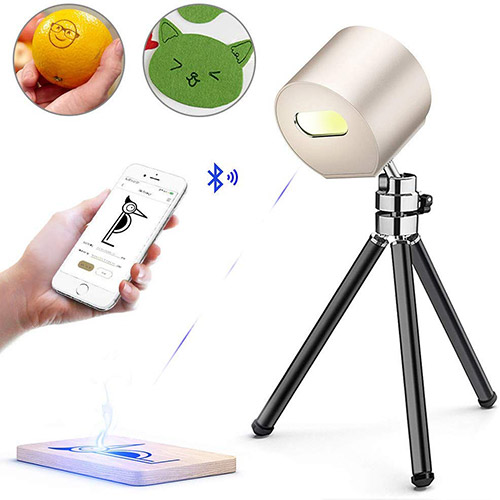Since the laser was invented in the 1960s, lidar has developed on a large scale. Lasers have become a real enabler, making laser pointer radars both cheap and reliable, making them more competitive compared to other sensor technologies. Lidar began to work in the visible region (ruby laser), then in the near infrared region (Nd: YAG laser), and finally in the infrared region (CO2 laser). Currently, many lidars work in the near-infrared region (~ 1.5 μm), which is harmless to the human eye. Based on the principle of lidar, many new technologies such as OCT and digital holography have gradually received attention.
Lidar is mainly used in surveying and mapping for ranging, positioning, and graphic drawing of earth and extraterrestrial objects; coherent lidar has important applications in environmental applications, such as the development of wind sensing and synthetic aperture lidar; gated imaging is mainly used in military , Medical and safety aspects; laser micro-radar has been used in vascular research and ophthalmology vision correction. Ghost Lidar has been applied in theory and simulation in the form of new technologies. Lidar is an important technology used in self-driving cars and unmanned aerial vehicles. It is also used by the police to measure speed and in games such as Microsoft Kinect somatosensory games.
Throughout the development history of lidar in Europe, the United States, the former Soviet Union, Japan and China, lidar has experienced many stages of development. From the earliest laser ranging, it has been widely used in military ranging and weapon guidance. , Especially laser positioning (bistatic radar). Further research has led to the development of the red laser pointer imaging system based on two-dimensional gated monitoring and the three-dimensional imaging technology being equipped. The development of imaging systems mainly includes: larger range and resolution across distances, single-photon sensitive arrays and multi-frequency or broad-spectrum emission lasers with multiple functions, better penetration capabilities, crossing plants, and crossing dense media. Perform applications such as target recognition.
In terms of civilian use and military-civilian use, environmental lidar has matured in atmospheric and marine remote sensing research, and in many countries, 3D mapping lidar has entered operation. As the efficiency of lasers becomes higher and higher, and they are also smaller and cheaper, this provides potential applications for automobiles and drones. The application in autonomous vehicles may be the most widely used commercial application of lidar, which is extremely The size, weight and cost of lidar are reduced.
Lidar technology has many applications in medicine. One example is optical low-coherence tomography. This technology originated from the extensive application of laser reflectors in ophthalmology to study the three-dimensional restoration of the eye structure, and the realization of three-dimensional endoscopy research on blood vessels , To expand to Doppler three-dimensional speedometer, another important example is the refraction imaging study of human eye diopter.
In the research of lidar systems, many emerging technologies and methods have emerged, including: multi-aperture and synthetic aperture, bidirectional operation, multi-wavelength or broadband emission lasers, photon counting and advanced quantum technology, combined passive and active systems, and Combination of microwave and lidar etc. At the same time, we also look forward to the use of coherent lidar to enable people to increase the method of obtaining full-field data.
In terms of components, effective multi-function Laser Engraver sources, compact solid-state laser scanners, non-mechanical beam control and shaping, sensitive and larger focal plane arrays, effective hardware and processing of lidar information and high data rates Algorithms, etc., to achieve direct and coherent detection. By comparing the achievements of lidar technology in the development of various countries in the past 50 years, the results show that lidar technology and related applications still have broad application prospects.

